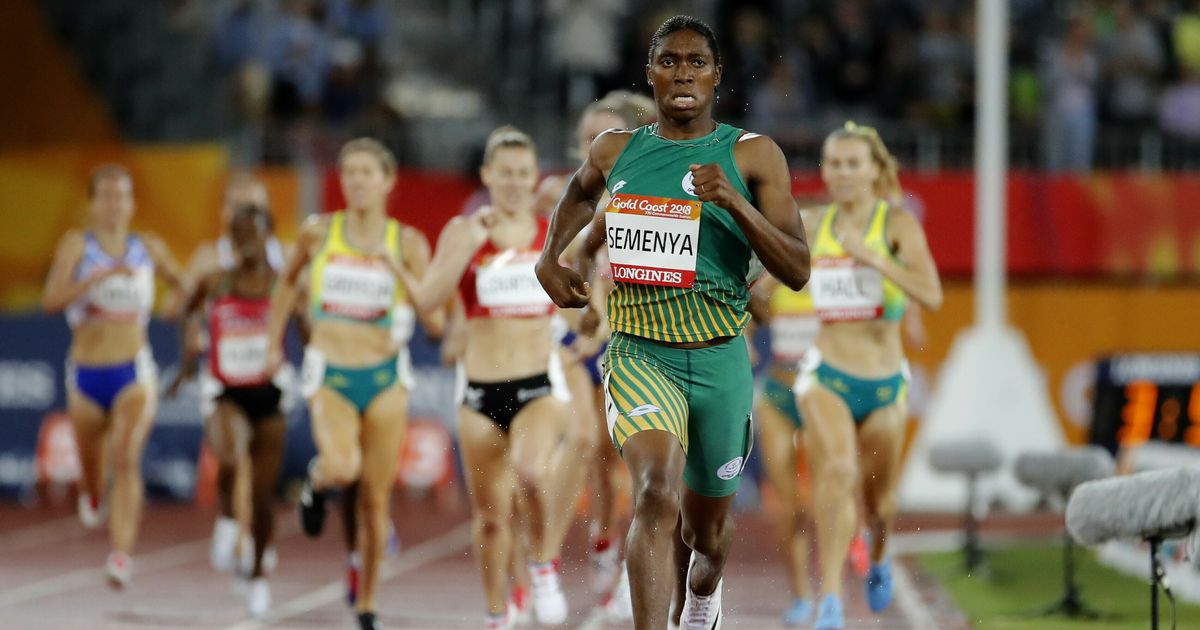Column: Welcome to the world of performance-reducing drugs


Everyone is supposed to be doing their best to rid sports of doping.
Yet, in a baffling decision Wednesday, South African star Caster Semenya was ordered to take drugs if she wants to keep running for championships.
Talk about sending the wrong message.
In a debate that has been raging for the better part of a decade, Semenya keeps getting singled out because her body naturally produces higher levels of testosterone than most females.
While this trait — which her attorney describes as “a genetic gift” — undoubtedly gives Semenya an edge on the track, why is that any different than the physical advantages possessed by all elite athletes?
No one made Ted Williams wear a patch over one eye when he stepped to the plate because his freakishly good vision helped him hit a baseball better than just about anyone else. No one thought it would be fair to tie Muhammad Ali’s ankles together because he was so much faster and quicker than the heavyweight boxers of his era.
No one wanted to put up a higher goal for Wilt Chamberlain to shoot at because he was far taller than most basketball players in the 1950s and ’60s. No one ordered Michael Phelps to swim in a weighted vest because of his long torso, double-jointed ankles and a metabolism that produced less lactic acid than other athletes.
Yet the Court of Arbitration for Sport essentially did that to Semenya. The highest court in world sports issued an admittedly discriminatory ruling that will force the two-time Olympic champion and women like her to take medication to suppress their levels of the male sex hormone if they want to compete in certain track and field events.
“That’s so ironic,” said Joel Maxcy, head of the Department of Sport Management at Drexel University in Philadelphia. “The whole performance-enhancing substance world has been about not taking things. But here, they’re going to force her to take something. To me, that’s very ironic and very odd and not right.”
CAS, it seems, is leading us into a scary new world. While trying to eradicate the persistent scourge of PEDs, they’ve opened the door to PRDs — performance reducing drugs.
“This sort of goes away from the whole concept of sports and the star athlete,” Maxcy said. “We’ve always understood that they have genetic gifts that put them above and beyond. I don’t see why this should be any different than that. She seems to be a specific target. But the justification for this ruling is that they need to level the playing field.”
That’s nonsense, of course.
But even more troubling, the CAS ruling diminishes Semenya’s impressive accomplishments and downplays all the other factors that go into the making of a world-class athlete — which, when taken in their entirety, are much more important than the physical gifts.
A searing passion to be the best.
A willingness to work harder than anyone else.
A steely focus that blocks out all potential distractions.
A head for the game, which requires putting in countless hours to study techniques, strategies and those who want to beat you.
Rest assured, winning gold in the last two Olympic 800-meter races was not simply because of Semenya’s testosterone levels, though plenty of rivals have persistently clung to that foolish notion.
After getting smoked by Semenya at the 2016 Rio Olympics, British runner Lynsey Sharp tearfully complained that she was, in essence, the victim of a rigged race because CAS initially overturned rules that would have forced the South African champion to take testosterone suppressants.
“It is out of our control and we rely on people at the top sorting it out,” Sharp wept after finishing sixth. “The public can see how difficult it is with the change of rule, but all we can do is give it our best.”
After crossing the finish line, Sharp hugged fellow runners Melissa Bishop of Canada and Poland’s Joanna Jozwik, who also missed out on the medal podium. “We see each other week in and week out, so we know how each other feel,” Sharp said, hinting that the other two were just as disgusted about losing to Semenya.
But that display pointed to another troubling aspect of this case, which began at the 2009 world championships when Semenya — then only 18 — was forced to take a humiliating sex verification test to prove she is a woman. It’s impossible to ignore the racial overtones of a black athlete’s accomplishments being challenged by a largely white group of rivals, especially when we’ve already seen it happen to tennis great Serena Williams and basketball star Brittney Griner.
Sharp, Bishop and Jozwik are white. So is another British runner, marathon world record holder Paula Radcliffe, who warned that a ruling in the South African’s favor could signal the end of women’s sports because it would supposedly embolden transgender athletes to compete in female events.
“To say there is not a racial element to this at all is probably naive,” Maxcy said. “Would this have happened to a white American athlete? Maybe not.”
Just as troubling, there have long been whispers about Semenya’s masculine appearance and, though the results of her sex test were never released, it was widely reported that she has intersex traits.
“There’s a lot of body shaming going on here,” said Mark Conrad, director of the sports business program at Fordham United, who has followed Semenya’s case closely. “A lot of stereotypes come into play. That’s unfair to her. She’s a very good runner. She could have been born with this and still been doing 10-minute miles.”
Semenya’s case is likely just the tip of a seismic shift in sports. Going forward, CAS will surely face much more challenging issues regarding transgender athletes and those who identify as gender neutral.
This was not a promising start.









